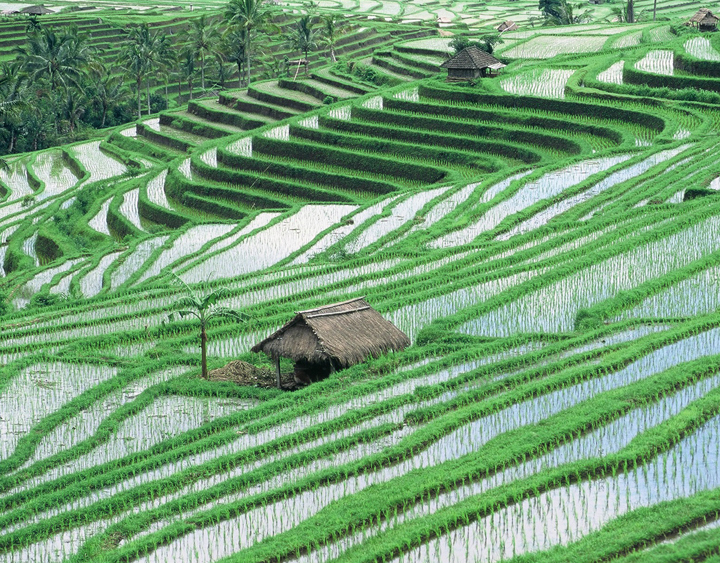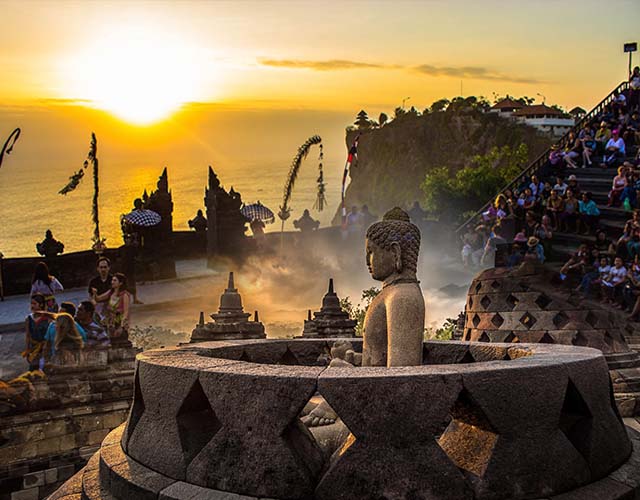Back Road : From 16th Century Temple to Rice Terrace

Exploring Bali Island will surprise you with new route and new beautiful scenery. Although Bali Island is smaller than Kalimantan, but its magic always amuse the tourist. For those who want to experience Bali in different route to Jatiluwih which famous for rice terrace, do not skip to read this.
Jatiluwih is a favorite tourist destination in Bali famous with the beautiful rice terrace unfolding from the foot of mountain until the coastal side. It is one of places to visit in Bali with the beautiful view as according to its name from Jati and luwih, where Jati means really and Luwih means especial, good, and beautiful or the equivalent. The local paddies are planted in this place look typically of the high relative size plant if it is compared with other pre-eminent paddy planted by most farmers in Bali. Despitefully, Jatiluwih also famous with its organic agriculture system due to the location is located in the in the plateau of Watukaru Mount which is suitable for the agriculture development.
To feel the cool breeze in Jatiluwih, start and drive to north to Kerobokan village and continue visit Tanah Lot. Tanah Lot means "Land in the Sea" in the Balinese language. Located in Tabanan, about 20 kilometres (12 mi) from Denpasar, the temple sits on a large offshore rock which has been shaped continuously over the years by the ocean tide. Tanah Lot is claimed to be the work of the 16th-century Dang Hyang Nirartha. During his travels along the south coast he saw the rock-island's beautiful setting and rested there. Some fishermen saw him, and bought him gifts. Nirartha then spent the night on the little island. Later he spoke to the fishermen and told them to build a shrine on the rock, for he felt it to be a holy place to worship the Balinese sea gods. The main deity of the temple is Dewa Baruna or Bhatara Segara, who is the sea god or sea power and these days, Nirartha is also worshipped here. The Tanah Lot temple was built and has been a part of Balinese mythology for centuries. The temple is one of seven sea temples around the Balinese coast. Each of the sea temples was established within eyesight of the next to form a chain along the south-western coast. In addition to Balinese mythology, the temple was significantly influenced by Hinduism. At the base of the rocky island, venomous sea snakes are believed to guard the temple from evil spirits and intruders. The temple is purportedly protected by a giant snake, which was created from Nirartha's selendang (a type of sash) when he established the island.
Continue drive to Pejaten Village to witness the brick is been made. 90% of Pejaten villager are a brick maker. After witness the process of makin brick, continue to Tantris Museum. Established on May 30, 2011, ‘Tanteri’ Museum of Ceramics is located in Tabanan Bali and managed by Tanteri Foundation. This ceramic museum showcases various kinds of pottery and ceramics which have been made in Pejaten as well as various types of ceramics that found in Indonesian archipelago. The name of the museum ‘Tanteri’ has significant meaning. The word ‘Tanteri’ was derived from the name of a very important figure, who has given a large contribution in the development of ceramics craft in Pejaten village. You can join in course to make pottery ceramics for 1 – 3 hours. Lunch in local restaurant.
After lunch trip continue to visit Batukaru Temple. Pura Luhur Batukaru is a Hindu temple in Tabanan, Bali, Indonesia. Located on the southern slope of Mount Batukaru, Bali's second-highest volcano, the temple is one of nine “Kayangan Jagat” meant to protect Bali from evil spirits. Drive to Jatiluwih, the highlight of today. You will be hypnotized by the scenery along the way. Everywhere you look you will see stunning rice field terrace here. So many beautiful colours that change every season, green when the rice is just planted, and golden yellow when it's ready to be harvested. Get a glimpse on how the local people work and live in harmony with the nature and each other. Drive up to Bedugul then stop at Candi Kuning traditional market. Candi Kuning Traditional Market is located near the entrance of Botanical Garden. This market provides fresh fruits, vegetables, spices, and exotic flowers such as delicate orchids and roses that are neatly displayed creating an array of wonderful colors. Spices include nutmeg, pepper, paprika and turmeric. A wide variety of fresh fruit and vegetables can be found here, as well as pomelo and durian.




















Leave a Comment